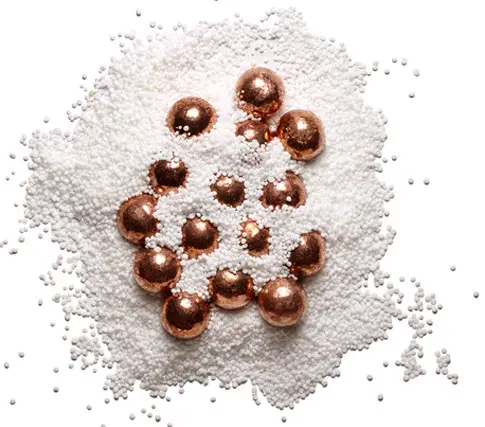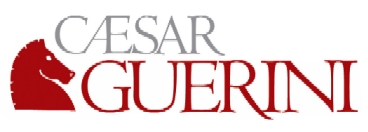


The Verdict on Winchester Longbeard XR Turkey Loads
For starters, the claims according to Winchester:
"Drop
old tom at distances beyond 40 yds.
10% greater penetration beyond 50 yds.
Twice the pellets in a 10" circle out to 60 yds.
Do some long-distance turkey slamming at a fraction of the cost of most
popular heavier-than-lead loads. Winchester Long Beard XR Turkey Shotshells
drop old tom at distances beyond 40 yds. Thanks to Shot-Lok™ Technology,
your shot is protected during in-bore acceleration, launching the round
in a near-perfect circle for hard-hitting and extremely tight long-range
patterns. The results – 10% greater penetration over standard lead
loads beyond 50 yds and twice the number of pellets in a 10" circle
out to 60 yds."
The Reality
Dropping “old tom” at distances beyond 40 yards is nothing new
at all, nor is it often needed or desirable. The National Wild Turkey
Federation has continually suggested 40 yards as the maximum desirable
range.
All shotshells are
launched in a “near perfect circle,” nothing new there, although
a cylindrical mass is more accurate than just calling it a circle. When
shotgun barrels have bores that look like triangles, perhaps we can try
to launch shot in near perfect triangles, but that claim makes no sense.
No, there is no basis for either the 10% greater penetration or twice
the pellets in a 10 inch circle out to 60 yards. Specific choke used has
a great effect on on patterns, impact velocity has an effect on penetration.
Generalized, sloppy claims like this are meaningless.
Although Winchester tries to suggest that these loads are almost as good as high-density loads, they aren't. The problem with high-density loads is that tungsten sells for $21.55 a pound as this is written while lead is $0.95 per pound. It is 20x the price for tungsten and, in general, consumers have said that it isn't worth it to them.
Discussion

Shot that retains sphericity has always been better than deformed shot,
the reason for high-antimony lead target loads, and traditional buffered
lead loads. Sphericity is something easily lost in the whacky world of
marketing, and that is something the Winchester brand easily ignored with
their truly horrible “Blindside” loads. Apparently, shotshell
ballistics change with whatever gimmick you are trying to tout at the
time.
If the question is if “Winchester Longbeard XR Turkey Loads” compare favorably with Federal Heavyweight turkey loads, the easy answer is no, they do not, not remotely close. If the question is if “Winchester Longbeard XR Turkey Loads” are better than other buffered lead loads with the same payload, the answer is yes, they certainly are. They are a LOT better and they rate as the best 12 gauge lead loads ever tested.
If you want the best pattern with moderate recoil, see: http://www.randywakeman.com/FederalHeavyweight12GaugeTurkey.htm . The Federal Heavyweight #7 1-5/8 oz. shell is a superior shell with superior patterns at a superior price. It also has noticeably less recoil than the Winchester Longbeard XR loads.
Remington offers their 2 oz. #5 buffered lead 3 inch twelve gauge shell at about $17 for 10 rounds, their Remington® Premier® Magnum Copper-Plated Turkey Load. It throws about 340 pellets.
The Winchester Longbeard XR #5 3 inch shell is $20 or so for 10 rounds, but has a lighter 1-3/4 oz. payload. It throws about 297 pellets.
The Federal Heavyweight #7 12 Gauge Turkey 1-5/8 oz. load comes in 5 round boxes and is twice the cost per shot. It is the best shell of the bunch, though, and throws 353 pellets.
Here's the rub: at 40 yards, with the right choke tube, all three of these shells kill turkeys 100% stone dead. Since it is really hard to kill them beyond dead, if you are hunting at 40 - 45 yards or so and in, there is no difference as long as you pick the right choke and put your pattern in the right place.
The Winchester liquid buffering idea is a very, very good one. It is the best method of buffering lead loads I've ever seen, and is capable of higher efficiency patterns than granulated buffer loads. The problem is that the “Shot-Lok™ Technology” of frangible buffering takes up space in the hull. Yes, you can get higher pattern percentages than you would with the Remington 2 oz. load. However, the Remington 2 oz. load has roughly 15% more #5 lead pellets. If you get 10 – 15% higher pattern percentage with the Winchester Longbeard shell, so what? While it may be a higher pattern percentage, it is a pattern percentage of a pattern with less pellets in it.
If the cost of the shell is important to you (it doesn't make a tremendous amount of sense for one shell on a turkey), then the Remington 2 oz. buffered loads, the “Remington Premier® Magnum Turkey Load” P12XHM5 is perhaps a better best bang for the buck at $1.70 per shot. There is a rebate going on as well, not unusual for this time of year. The Winchester Longbeard isn't much more, though, thirty cents a shot or so.
If you want the densest patterns from a factory shell, then Federal Heavyweight #7 12 Gauge Turkey is an easy choice. You aren't going to get the tightest pattern from any of these shells out of any old choke, for it is still the choke tube that controls pattern diameter. In fact, Trulock makes a choke tube specifically for Federal Heavyweight #7.
If you've been turkey hunting for a while, perhaps you already have your favorite combinations. Here are the general best starting points, called out in Trulock part numbers. Unlike a lot of things with shotguns, the part number numbers actually mean something: the last three digits are the choke exit diameters in thousandths of an inch. For example, the 12 gauge Mobilchoke has an exit diameter of .660 inch.
Beretta and Benelli
Mobil style- PHBER12660
Beretta Optima Plus-PHOP12668
Benelli Crio Plus-PHCRP12660
Browning Invector-PHWIN12665
Browning Invector Plus-PHIP12670
Remington Rem Choke-PHREM12665
Winchester Win Choke- PHWIN12665
Conclusion
The new Winchester Longbeard shells are an significant advance in buffering technology as applied to lead shotshells. It is no revolution in turkey loads by any means, falling well behind Federal Heavyweight shells and are also inferior to the prior Winchester Xtended Range HD offerings. It also offers no love to those who enjoy turkey hunting with 16 or 20 gauges. It does not change the density of lead, so it does not significantly change what #5 lead shot can do. Just as the inferior density of steel condemns it to be a poor replacement for lead, lead itself cannot retain the velocity or penetration of denser than lead shot materials.
When the Winchester Xtended Range HD loads came out, they were the best turkey loads I'd ever tested, and I said so. When the Federal Heavyweight #7 loads came out, they proved to be even better . . . and, I said so. Longbeard does not rank with either. Its appeal is price in a superior buffered lead load: and that, it truly is.
In the fairy-tale land of marketing, cherry-picking of data, and ad-bragging, “Longbeard” is a good 60 yard turkey load, but only in Neverland. It is an improved buffering for lead, but nothing more than that. It is very good product though, the best buffered lead shotshells ever released. It is just not as good as claimed. If you believe that a 1-3/4 oz. buffered lead load of #5 shot is an excellent choice for turkey at 40 yards (I do) then an improved lead load would offer 10% or so longer ranges. That makes Longbeard #5 a 44 - 46 yard load, compared to prior buffered 1-3/4 oz. #5 "40 yard" lead loads, a more realistic assessment of comparative performance.

The "rub" is that shotshells are always a compromise. While spherical #4 lead pellets retain more velocity down range and do a better job crushing bones, the penalty is the reduced pellet count. On one hand, #4 pellets are the better long range pellets, yet with longer ranges you need more pellets. Yet, for the same payload, #5 shells have about 26% more pellets.
In any case, Winchester
deserves congratulations for the best lead buffering technology ever developed,
something that is an improvement over prior lead turkey shotshells and
should accomplish the same in their Rooster XR pheasant loads, due out
mid-year.
Copyright 2014 by Randy Wakeman. All Rights Reserved.




